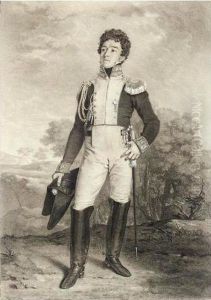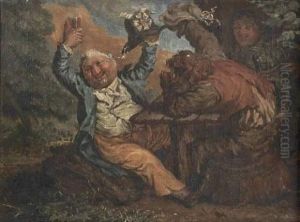Adrien-Victor Auger Paintings
Adrien-Victor Auger was a French artist and engraver born in Paris in 1787. Throughout his career, he was recognized for his skill in engraving, which was a highly regarded art form during that period. Engraving was not just a means of artistic expression but also a crucial method for reproducing and disseminating works of art, which was especially important before the advent of photographic reproduction.
Auger trained under the guidance of notable engraver Charles Clement Balvay, who was also known as Bervic. This training was integral to Auger's development as an artist, and he soon became proficient in the neoclassical style of engraving, which was popular at the time. The neoclassical style was characterized by its clarity, order, and adherence to the aesthetics of classical art.
Auger's works often included reproductions of famous paintings, which required a delicate balance of technical skill and artistic interpretation. He had to translate the color, tone, and texture of the original paintings into the black and white medium of engraving, capturing the essence and emotion of the original works.
During his lifetime, Auger's engravings were highly appreciated, and he contributed to the spread of neoclassical aesthetics throughout Europe. He also engraved portraits and historical scenes, adding to the visual culture of the era. Unfortunately, many engravers of the period, including Auger, have not been widely remembered, largely because their work was considered a form of reproduction rather than original creation.
Adrien-Victor Auger passed away in 1854. While his name may not be as well-known as some of his contemporaries, his contributions to the art of engraving and the dissemination of neoclassical art remain significant. His works continue to be of interest to art historians and collectors who value the skill and artistry involved in the creation of fine engravings.

